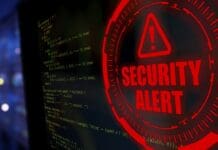This post is also available in:
 עברית (Hebrew)
עברית (Hebrew)
A new, wearable UAV detection device has just been released by Australian anti-drone firm, DroneShield. The RfPatrol weighs just over 2 pounds and is designed for use by law enforcement, military, and overly cautious customers. The device does not emit jamming signals, so it’s legal to use in more jurisdictions than most other anti-UAV systems.
As it is frequently mentioned here, rogue drones can present a major threat to military and other security personnel. Hostile drones can be used to gather crucial intelligence on friendly forces, as well as harming them and damaging critical infrastructures, such as oil rigs and airports.
The drone detector can be operated in “glimpse” or “stealth” modes, each mode controlling how the user receives alerts regarding nearby drones. The operator receives feedback from the device via visual, audio, and haptic components.
The device also utilizes a system allowing the operator to maintain databases regarding drone detection. The system is called DroneShield Link.
In less than five seconds, the RfPatrol can detect a drone on a known frequencies, as well as detecting drones on unknown frequencies over half a mile away.
Due to its small body, non radio jamming nature, and relatively low price, DroneShield CEO, Oleg Vornik, believes the device will have a substantial appeal. He also considers the RfPatrol a great companion to the companies DroneGun product, which obviously enough, is a gun shaped drone killer.
Other products that DroneShield develop include the DroneSentinel, a detection product designed to locate rogue drones, and the DroneSentry, a device that detects and neutralizes drones. Dronelife.com mentions that the DroneSentinel is targeted towards customers unable to deploy jamming because of regulatory restrictions, whereas the DroneSentry is targeted towards foreign clients, since the device may not be authorized in the United States because it jams radio signals.

























